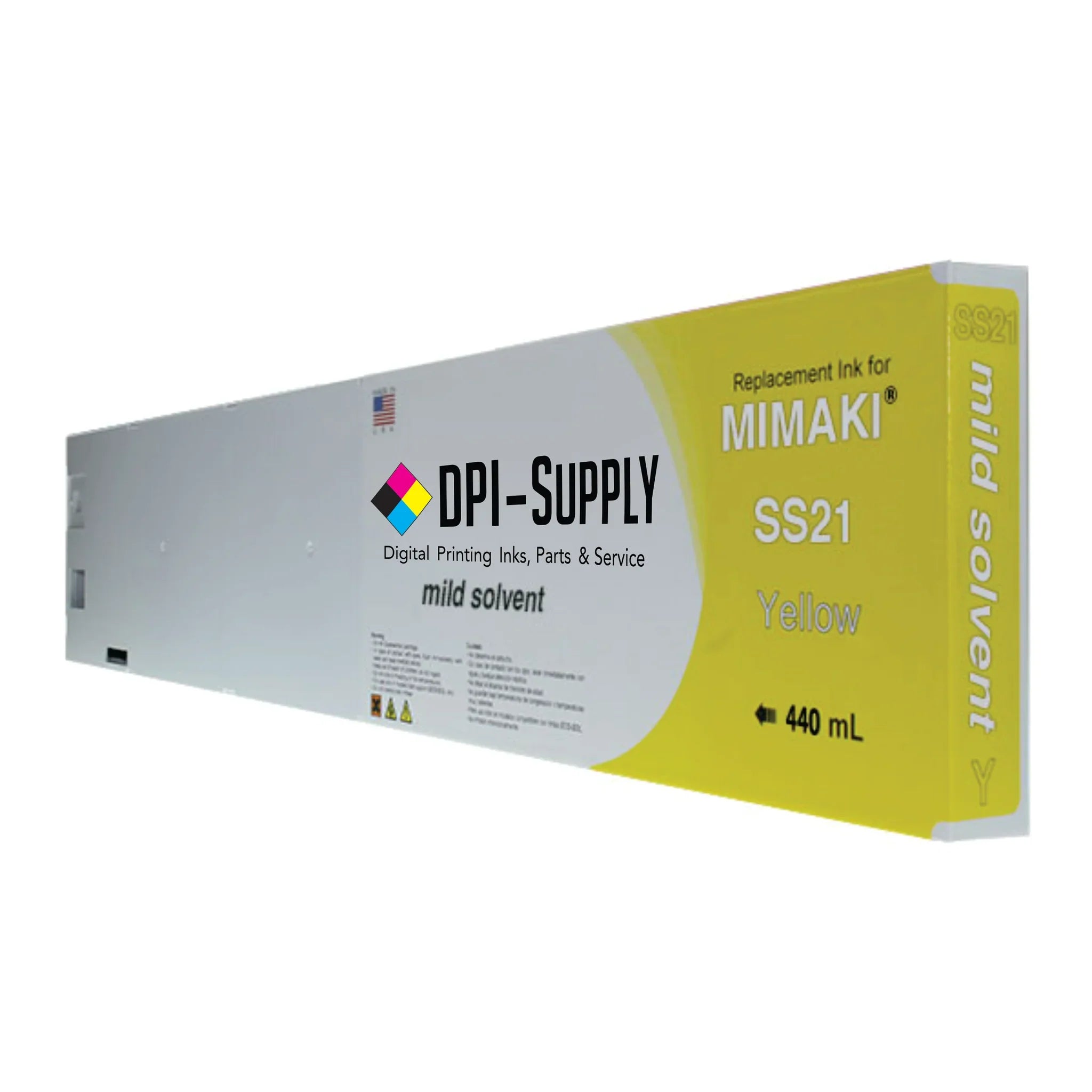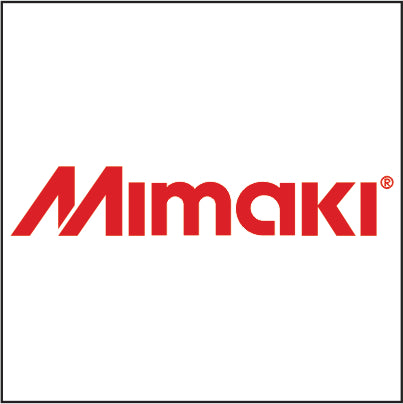How Do I Prevent Clogging When Using Mimaki Inks?
If you’ve ever had trouble with ink clogging in your Mimaki printer, you're not alone. Ink clogging is one of the most common issues that affect large-format printers, and it can be a costly and frustrating experience. In this post, we’ll answer the important question, "How do I prevent clogging when using Mimaki inks?" and give you effective strategies to keep your printer running smoothly. We'll discuss the causes of clogging, prevention methods, and maintenance tips to ensure that your Mimaki SS21 ink works flawlessly, whether you’re printing on vinyl, banner material, or other substrates.

The Causes of Clogging in Mimaki Printers
Understanding the root causes of clogging can help you prevent it from happening in the first place. When it comes to Mimaki SS21 ink, there are several factors that can lead to ink clogging. Some of these include:
-
Drying Ink: Over time, ink can dry up in the printer’s printhead nozzles, especially if the printer is left idle for extended periods.
-
Ink Pigment Settling: The pigments in Mimaki SS21 ink can settle, which leads to an uneven distribution of ink. This can cause clogs, especially in the fine printhead nozzles.
-
Environmental Factors: Temperature and humidity levels in your workspace can affect the performance of your printer. High humidity can cause ink to thicken, while excessive heat can cause the ink to dry prematurely.
Now that we understand what causes clogging, let’s dive into how to prevent it effectively.
How to Prevent Clogging When Using Mimaki SS21 Ink
Preventing ink clogging is all about maintaining a clean and functional system for your Mimaki printer. Regular maintenance and some careful precautions can go a long way in avoiding the headaches of ink clogs.
1. Perform Regular Printhead Cleaning
One of the most effective ways to prevent clogs in your Mimaki SS21 ink printer is to perform regular printhead cleaning. This cleaning process helps to clear any dried ink or debris from the printhead nozzles, ensuring smooth ink flow.
If your printer uses SS21 Mild Solvent inks, a weekly or bi-weekly cleaning schedule is recommended, depending on how often the printer is used. If you notice any banding or streaks in your prints, this is a clear indication that the printheads need to be cleaned.
2. Use the Correct Cleaning Solution
Make sure you’re using the appropriate cleaning solution for your Mimaki SS21 ink printer. Using the wrong solvent or cleaning fluid can damage the printer or exacerbate clogging. Always refer to the manufacturer's guidelines for recommended cleaning solutions.
Tip: Some users opt to use Mimaki Printer ES3 Ink for cleaning. This is a mild solvent ink that helps dissolve dried ink without harming the printhead.

3. Regularly Run Test Prints
Running regular test prints is an excellent preventative measure. It allows you to check the functionality of your printer’s nozzles and identify clogs before they become a bigger problem. Most Mimaki printers have built-in software that makes this process easy.
If you notice any missing lines or weak colors in your test prints, immediately perform a cleaning cycle or a nozzle check to prevent a complete blockage.
4. Monitor Environmental Factors
As we mentioned earlier, environmental factors can significantly impact the performance of your Mimaki SS21 ink. Excessive humidity or heat can cause the ink to behave unpredictably, resulting in clogging. Keep your printing area in an optimal range, ideally around 68–72°F (20–22°C) with a relative humidity of 40-60%.
5. Use Fresh Ink
Always use fresh Mimaki SS21 ink cartridges to prevent clogs. Over time, ink can degrade or settle, especially if it’s been sitting for a long period. This can lead to uneven ink flow or nozzle clogging. If your ink is nearing its expiration date or has been stored improperly, it’s better to replace it than risk clogs.
6. Ensure Proper Printer Usage
Avoid leaving your Mimaki printer inactive for extended periods. If you need to leave it unused, make sure to run a cleaning cycle and check the ink levels. Mimaki SS21 ink is formulated to dry at a moderate pace, but if the printer is left off for days or weeks, the ink may dry inside the nozzles.
How to Clean a Mimaki Printhead?
Cleaning the printhead on your Mimaki printer is a straightforward process, but it must be done carefully to avoid damaging the nozzles. Here’s a quick guide to cleaning your printhead:
-
Perform a Test Print: Check the quality of your prints to identify any issues with the printhead.
-
Run a Cleaning Cycle: Your printer will have a built-in cleaning function. Run the cleaning cycle to clear any minor blockages.
-
Manual Cleaning (if necessary): If a cleaning cycle doesn’t resolve the issue, you can manually clean the printhead. Use a soft lint-free cloth and apply the recommended cleaning solution to gently wipe the nozzles.
-
Check for Dried Ink: Dried ink is one of the leading causes of printhead clogging. Use the right solution to gently remove any buildup.
Remember, excessive cleaning can also cause damage, so only clean your printheads when necessary.
How Long Does Mimaki Ink Last?
A common question among users is "How long does Mimaki ink last?" The shelf life of Mimaki SS21 ink typically ranges from 6 to 12 months, depending on storage conditions. Ink that is stored in a cool, dry place will last longer than ink that is exposed to high heat or direct sunlight.

If you’re unsure about the age of your ink, it’s best to perform a quick test print to see if the colors are still vibrant and consistent. If not, it’s time to replace the ink.
What is the Drying Time for Eco Solvent Inks?
The drying time for eco-solvent inks like Mimaki SS21 ink is generally about 1-5 minutes, depending on the material and the environmental conditions. However, this can vary depending on the ink, printer, and media used. For more in-depth information on drying times, check out this article on What is the Drying Time for Eco Solvent Inks? from DPI Supply.
Conclusion: Maintaining Your Mimaki Printer for Optimal Performance
Preventing ink clogging when using Mimaki SS21 ink is crucial to maintaining high-quality prints and extending the life of your printer. Regular maintenance, proper environmental control, and using the right cleaning solutions are all important steps in ensuring your Mimaki printer remains in optimal working condition.
By following the steps outlined in this article, you’ll be able to minimize the risk of clogs, keep your prints vibrant and consistent, and avoid costly repairs.







